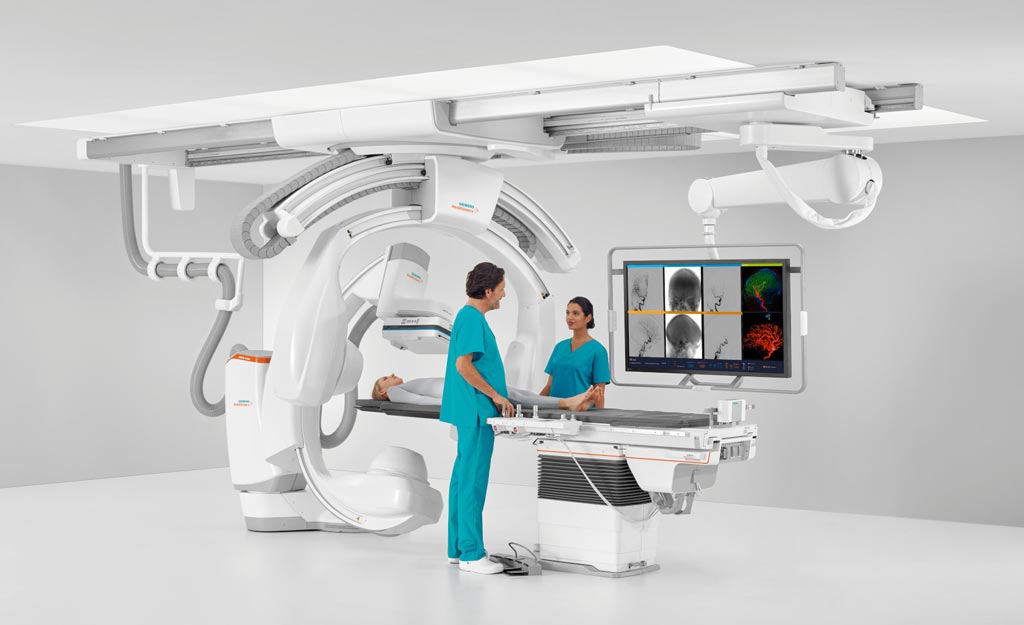Novel Angiography Systems Expand Precision Medicine Capabilities
By MedImaging International staff writers
Posted on 30 Sep 2019
New angiography systems permit a wide range of procedures to be performed in a single suite, improving interventional lab utilization and interdisciplinary usage.Posted on 30 Sep 2019
The Siemens Healthineers (Erlangen, Germany) family of Artis icono angiography systems includes the ARTIS icono biplane system, which has been engineered for optimal utilization in neuroradiology and abdominal imaging, and the ARTIS icono floor single-plane system for vascular, interventional cardiology, surgical, and oncology procedures. At its core, the ARTIS icono platform delivers the new OPTIQ image chain, which fundamentally redesigns image processing for 2D imaging.

Image: The ARTIS icono biplane system (Photo courtesy of Siemens Healthineers).
OPTIQ increases image quality across a wide range of C-arm angles and patient weights, regulating acquisition parameters to automatically achieve optimal image contrast at patient radiation doses that conform to the As Low As Reasonably Achievable (ALARA) guiding principal for radiation safety. ARTIS icono also improves the Siemens Healthineers roadmap function, which creates subtracted angiography images for easier navigation of the patient’s vascular system during subsequent fluoroscopy, allowing dose reduction.
Stroke treatment and other neuro procedures benefit from new features of the ARTIS icono biplane, including syngo DynaCT Sine Spin, which provides images with fewer cone beam CT artifacts in the basal part of the brain and close to the skull; syngo DynaCT Multiphase, which produces time-resolved cone beam CT volumes; and syngo DynaCT High Speed, which can substantially shorten low-contrast 3D imaging from 20 seconds to eight, delivering CT-like images that are less susceptible to movement artifacts. A Twin Spin feature enables clinicians to seamlessly switch between 2D biplanar imaging and 3D imaging, accelerating workflow and simplifying 3D imaging for intra-procedural progress checks.
The ARTIS icono floor is a multi-axis floor system created for a wide range of disciplines, particularly vascular, interventional cardiology, surgical, and interventional oncology. It provides coverage of patients up to 203 cm without repositioning, as well as lateral coverage of 190 cm, ideal for radial access. Thanks to an additional axis, ARTIS icono floor can achieve virtually the same angles as a ceiling-mounted system and free space for anesthesia carts, echocardiography systems, and patient monitors, without the cost of a ceiling-mounted unit.
“The ARTIS icono family of angiography systems will have nothing short of a revolutionary impact on our customers and on the delivery of healthcare in general, by setting new standards for image quality and optimized workflow in minimally invasive procedures,” said Lara Barghout, senior vice president and head of advanced therapies at Siemens Healthineers North America. “And as more hospitals introduce comprehensive stroke services to treat more patients who are eligible for thrombectomies, the ARTIS icono biplane raises the bar in consistent 3D image quality for whole-brain imaging.”














